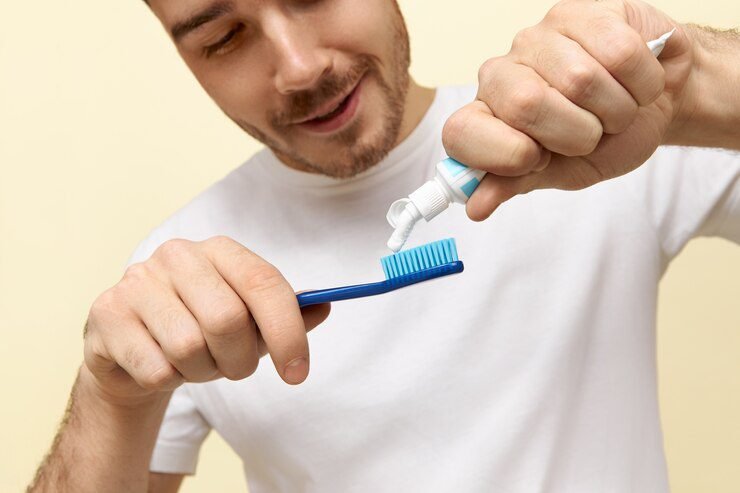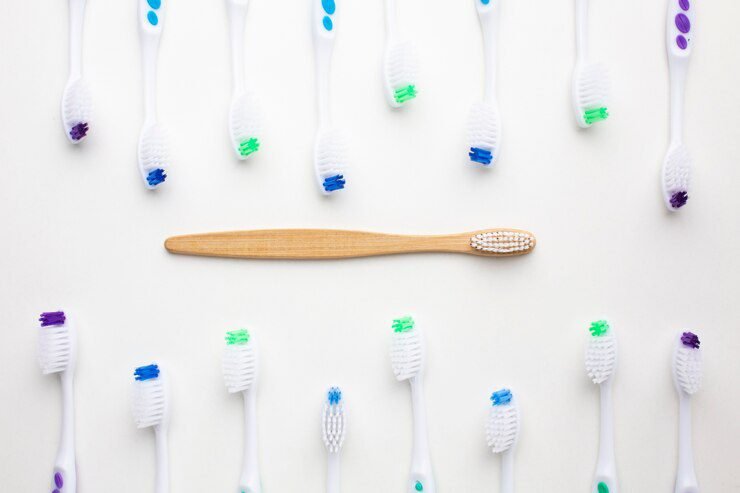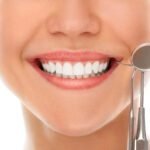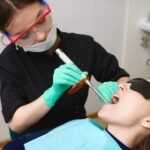Table of Contents
The Basics of Brushing

Proper brushing techniques are essential for maintaining optimal oral health. Brushing your teeth regularly removes plaque and debris, preventing tooth decay and gum disease. To ensure that you are effectively cleaning your teeth, start by selecting a soft-bristled toothbrush that fits comfortably in your hand. The size and shape of the brush head should also be appropriate for reaching all areas of your mouth.
When brushing, hold the brush at a slight angle towards your gum line, using gentle, circular motions. Be sure to clean the outer surfaces, inner surfaces, and chewing surfaces of your teeth. Don’t forget to brush your tongue as well, as it harbors bacteria that can contribute to bad breath. As a general rule, aim to brush your teeth at least twice a day for two minutes, making sure to replace your toothbrush every three to four months or sooner if the bristles become frayed.
By establishing a consistent brushing routine and following these basic techniques, you can help maintain a healthy smile and reduce the risk of dental problems. Remember, proper brushing is just one component of a comprehensive oral care regimen. Regular dental check-ups, along with flossing, a balanced diet, and avoiding tobacco products, are also crucial for maintaining optimal oral health.
The Science Behind Toothbrushing

To understand the science behind toothbrushing, it’s important to first recognize the role that plaque plays in oral health. Plaque is a sticky film of bacteria that constantly forms on our teeth. If left unchecked, plaque can lead to tooth decay, gum disease, and other oral health problems. This is where toothbrushing comes in.
Brushing your teeth effectively helps to remove plaque and prevent its build-up. The bristles of a toothbrush physically remove plaque from the surfaces of the teeth, while the motion of brushing also helps to dislodge plaque from hard-to-reach areas. Additionally, toothpaste contains active ingredients such as fluoride that can help to further prevent tooth decay and strengthen enamel. Brushing your teeth regularly, along with proper technique and the right toothbrush and toothpaste, forms the foundation of a good oral hygiene routine.
It’s also worth noting that the frequency and duration of toothbrushing are important factors in maintaining oral health. The American Dental Association recommends brushing your teeth twice a day for at least two minutes each time. This ensures that all surfaces of your teeth are adequately cleaned and that any plaque or bacteria are thoroughly removed. By understanding the science behind toothbrushing and following proper oral hygiene practices, you can help maintain a healthy smile for years to come.
Choosing the Right Toothbrush

Choosing the right toothbrush is essential for maintaining good oral hygiene. With so many options available in the market, it can be overwhelming to make a decision. However, selecting the appropriate toothbrush can make a significant difference in your overall dental health.
Firstly, consider the bristle type. Dentists generally recommend using a toothbrush with soft nylon bristles. Soft bristles are effective in removing plaque and debris from the teeth without causing any damage to the delicate gum tissue. Medium or hard bristles may be too harsh and can lead to gum recession and enamel wear over time. So, opt for a toothbrush with soft bristles to protect your gums and enamel.
Secondly, pay attention to the size and shape of the toothbrush head. A toothbrush head that is too large may make it difficult to reach the back teeth and clean them properly. On the other hand, a small toothbrush head might not provide sufficient coverage. Ideally, choose a toothbrush with a head size that comfortably fits in your mouth and allows easy access to all areas of your teeth.
Remember, investing in a good quality toothbrush is a worthwhile decision. Look for toothbrushes that have received the stamp of approval from dental professionals or carry the American Dental Association (ADA) seal of acceptance. These toothbrushes have met the required standards of safety, efficacy, and quality. Consult with your dentist for personalized recommendations based on your specific dental needs to ensure you make the right choice.
The Role of Toothpaste
Toothpaste plays a crucial role in maintaining good oral hygiene. It is a key component of daily brushing routines as it helps to effectively remove plaque, prevent tooth decay, and freshen breath. This essential dental product contains active ingredients that work together to improve the health of your teeth and gums.
One of the primary functions of toothpaste is to provide a source of fluoride. Fluoride is a mineral that helps to strengthen tooth enamel and protect against cavities. It works by remineralizing areas of the teeth that have been weakened by acids produced by bacteria in the mouth. Using a fluoride toothpaste can significantly reduce the risk of tooth decay and promote long-term oral health. Additionally, toothpaste often contains mild abrasives that help to remove surface stains and polish the teeth, leaving them looking cleaner and brighter.
In addition to fluoride and abrasive particles, toothpaste also contains various other ingredients. These may include antibacterial agents, such as triclosan or essential oils, which help to reduce the number of harmful bacteria in the mouth. Some toothpaste variants also feature desensitizing agents like potassium nitrate or strontium chloride, which can alleviate tooth sensitivity by blocking the transmission of pain signals from the nerves. Mint or other flavorings are often added to toothpaste to provide a pleasant taste and leave the mouth feeling fresh and clean after brushing.
Overall, toothpaste is an indispensable tool in maintaining optimal oral health. By choosing a toothpaste that meets your specific needs and using it consistently as part of your daily oral hygiene routine, you can effectively prevent tooth decay, freshen your breath, and keep your smile looking its best.
Below is the updated table with the role of toothpaste in oral hygiene, including information supported by the American Dental Association (ADA) with outbound links:
| The Role of Toothpaste | Description | Source |
|---|---|---|
| Removes Plaque | Toothpaste contains abrasive agents that help mechanically remove plaque, a sticky film of bacteria and food particles that forms on teeth. Regular brushing with toothpaste helps prevent the buildup of plaque, reducing the risk of tooth decay and gum disease. | ADA: Oral Health Topics: Toothpaste |
| Cleans Teeth | Toothpaste contains detergents and surfactants that create foam to help loosen and remove debris from the teeth’s surface. This cleaning action helps remove stains, food particles, and bacteria from the teeth, leaving them clean and smooth. | ADA: Oral Health Topics: Toothpaste |
| Freshens Breath | Many toothpaste formulations contain flavoring agents such as mint or menthol to freshen breath and leave a pleasant taste in the mouth. Additionally, antibacterial agents in toothpaste help reduce odor-causing bacteria, contributing to fresher breath. | ADA: Oral Health Topics: Toothpaste |
| Strengthens Enamel | Some toothpaste contains fluoride, a mineral that strengthens tooth enamel and helps prevent tooth decay. Fluoride remineralizes weakened enamel, making teeth more resistant to acid attacks from plaque bacteria and acidic foods and beverages. Regular use of fluoride toothpaste can help protect against cavities and maintain overall oral health. | ADA: Oral Health Topics: Toothpaste |
| Fights Cavities | Toothpaste with fluoride is effective in preventing cavities by strengthening enamel and inhibiting the demineralization process that leads to tooth decay. Fluoride helps repair early stages of tooth decay before cavities develop and can reverse early signs of decay. | ADA: Oral Health Topics: Toothpaste |
| Soothes Sensitivity | Some toothpaste formulations are designed for individuals with sensitive teeth, containing ingredients that help desensitize nerve endings and reduce tooth sensitivity to hot, cold, sweet, or acidic stimuli. These toothpastes typically contain potassium nitrate or strontium chloride to soothe sensitivity and provide relief from discomfort. | ADA: Oral Health Topics: Toothpaste |
| Promotes Gum Health | Toothpaste may contain ingredients such as triclosan or essential oils that help reduce plaque and bacteria along the gumline, promoting gum health and preventing gingivitis. Additionally, toothpaste with antibacterial properties can help control bacterial growth and reduce inflammation in the gums, supporting overall gum health. | ADA: Oral Health Topics: Toothpaste |
| Provides Fluoride Protection | Fluoride toothpaste provides ongoing protection against cavities by strengthening enamel and remineralizing tooth surfaces. Fluoride helps prevent demineralization of enamel caused by acid-producing bacteria and acidic foods, reducing the risk of tooth decay and maintaining optimal oral health. | ADA: Oral Health Topics: Toothpaste |
| Enhances Oral Hygiene | Toothpaste is an essential component of daily oral hygiene routines, complementing brushing and flossing to effectively clean teeth and gums. Regular use of toothpaste helps remove plaque, freshen breath, strengthen enamel, and protect against cavities and gum disease. | ADA: Oral Health Topics: Toothpaste |
| Customized Formulations | Toothpaste comes in various formulations to address specific oral health needs, such as whitening toothpaste for stain removal, fluoride toothpaste for cavity protection, or sensitive toothpaste for relief from tooth sensitivity. Individuals can choose toothpaste tailored to their unique oral health concerns and preferences to achieve optimal results. | ADA: Oral Health Topics: Toothpaste |
Understanding the Importance of Technique
Proper brushing technique is crucial for maintaining optimal oral health. While using a toothbrush may seem like a simple task, it is essential to understand the importance of technique to effectively remove plaque and prevent dental problems.
Firstly, it is vital to position the toothbrush at a 45-degree angle towards the gumline. This allows the bristles to reach the areas where plaque tends to accumulate, such as the gumline and the spaces between the teeth. Gently move the brush back and forth in short, vibrating motions, ensuring that the bristles are also directed towards the chewing surfaces of the teeth. Avoid applying excessive pressure, as it can damage the gums and tooth enamel.
In addition to the brushing motion, it’s equally crucial to pay attention to the duration of brushing. Dentists recommend brushing your teeth for a full two minutes, twice a day. Many people fall short of this duration, reducing the effectiveness of their brushing routine. To ensure adequate time, consider using a timer or playing a song with a duration of around two minutes. Remember to clean all surfaces of the teeth, including the inner, outer, and chewing surfaces.
By mastering the correct brushing technique and maintaining consistent oral hygiene practices, you can significantly improve your overall oral health and reduce the risk of common dental issues like tooth decay and gum disease.
Proper Brushing for Different Age Groups
Proper brushing techniques vary depending on the age group, as the dental needs of children, teenagers, and adults differ. It is important to understand the specific requirements of each age group in order to maintain optimal oral health.
For young children, ages 0 to 2, it is crucial to start brushing as soon as the first tooth emerges. At this stage, a soft-bristled toothbrush should be used along with a smear of fluoride toothpaste, about the size of a grain of rice. Parents or caregivers should brush the child’s teeth twice a day, using gentle circular motions to clean all surfaces of the teeth and gums.
As children grow older, around ages 2 to 6, they can start using a pea-sized amount of fluoride toothpaste. This age group may still need assistance with brushing to ensure proper technique. It is important to teach them how to brush all surfaces of the teeth, including the front, back, and chewing surfaces, for at least two minutes. Encouraging regular brushing habits and making it a fun and interactive experience can help establish good oral hygiene practices for the future.
Teenagers and adults, on the other hand, should follow similar brushing techniques, which involve using a soft-bristled toothbrush and a pea-sized amount of fluoride toothpaste. The recommended brushing time for this age group is also two minutes, twice a day. It is important to brush all surfaces of the teeth, paying extra attention to the gumline and hard-to-reach areas. Using a gentle, circular motion and avoiding harsh scrubbing can protect the tooth enamel and prevent gum damage. Additionally, individuals should replace their toothbrush every three to four months or sooner if the bristles become frayed.
By ensuring proper brushing techniques for different age groups, we can help maintain healthy teeth and gums throughout life. It is essential to establish good oral hygiene habits from a young age and maintain them consistently to prevent dental problems and promote overall oral health.
Brushing for Children: Tips and Tricks
Good oral hygiene habits should be instilled in children from a young age to ensure healthy teeth and gums. When it comes to brushing for children, there are a few tips and tricks that can make the experience more enjoyable and effective. Firstly, it is important to choose a toothbrush with soft bristles and a small head that is suitable for their age. This will help to prevent any discomfort or damage to their delicate gums. Encouraging them to brush for two minutes, twice a day, with a fluoride toothpaste is also crucial in maintaining their oral health. It is recommended to supervise their brushing until they are around 6 years old to ensure they are using the proper technique and not missing any areas.
Brushing for Adults: Common Mistakes to Avoid
Proper oral hygiene is essential for maintaining good dental health throughout adulthood. Unfortunately, many adults unknowingly make common mistakes when it comes to brushing their teeth. These errors can have detrimental effects on oral health and may increase the risk of tooth decay, gum disease, and other dental issues. Therefore, it is crucial to be aware of these mistakes and take corrective actions.
One common mistake adults make is neglecting to brush for the recommended duration. The American Dental Association (ADA) recommends brushing for a minimum of two minutes, twice a day. However, studies have shown that the average adult only spends around 45 seconds brushing their teeth. This inadequate brushing time does not allow for proper removal of plaque and bacteria, leaving the teeth susceptible to decay and gum disease. To avoid this mistake, it is advisable to use a timer or play a two-minute song to ensure sufficient brushing time.
Another mistake adults often make is using improper brushing technique. Many people vigorously scrub their teeth back and forth, thinking it will result in a cleaner mouth. However, this technique can actually harm the enamel and gums, leading to tooth sensitivity and gum recession. It is important to use a gentle circular motion when brushing, focusing on all surfaces of the teeth and along the gumline. Additionally, using a brush with soft bristles can help prevent unnecessary damage to the teeth and gums.
The Impact of Brushing on Oral Health
Proper brushing is one of the most crucial aspects of maintaining good oral health. Regular brushing helps prevent tooth decay, gum disease, and other dental problems. The impact of brushing on oral health cannot be overstated, as it plays a significant role in removing plaque, bacteria, and food particles that can accumulate on the teeth and gums.
When you brush your teeth, you not only clean the visible surfaces but also reach the areas that are difficult to access, such as the spaces between teeth and along the gumline. This thorough cleaning helps prevent the formation of dental plaque, which is a sticky film that can harbor harmful bacteria. If left untreated, plaque can harden into tartar, which can lead to tooth decay, gum inflammation, and even tooth loss.
In addition to removing plaque, brushing also stimulates the gums, improving blood circulation to the area. This can help keep the gums healthy and reduce the risk of gum disease. Moreover, regular brushing can freshen breath and enhance the overall appearance of your smile. Taking the time to brush properly can result in a cleaner, healthier mouth, and contribute to your overall well-being.
Preventing Tooth Decay and Gum Disease
Tooth decay and gum disease are two of the most common oral health problems faced by individuals of all ages. Fortunately, there are several preventive measures that can be taken to combat these issues and maintain a healthy smile. One of the most effective ways to prevent tooth decay and gum disease is through proper oral hygiene practices, including regular brushing and flossing. By removing plaque and bacteria from the teeth and gums, brushing can help prevent the formation of cavities and the development of gum disease.
In addition to regular brushing, it is important to maintain a balanced and nutritious diet to promote oral health. Foods that are high in sugar and carbohydrates can contribute to the production of plaque and the development of tooth decay. On the other hand, consuming foods that are rich in vitamins and minerals, such as fruits and vegetables, can help strengthen teeth and gums. Furthermore, drinking plenty of water can help rinse away food particles and bacteria, reducing the risk of tooth decay and gum disease. By incorporating these healthy habits into your daily routine, you can take proactive steps to prevent tooth decay and gum disease and maintain a beautiful, healthy smile.
Brushing for a Whiter Smile
A bright and radiant smile is often associated with good oral hygiene and overall health. If you desire a whiter smile, proper brushing techniques can play a significant role. Regular brushing helps remove surface stains and prevent the buildup of plaque and tartar, which can contribute to tooth discoloration.
To achieve a whiter smile, it is important to choose the right toothbrush and toothpaste. Consider using a soft-bristled toothbrush to gently scrub away stains without causing damage to the enamel. Look for toothpaste that contains ingredients like hydrogen peroxide or baking soda, which are known for their whitening properties.
In addition to selecting the right tools, technique is key. Use gentle, circular motions to thoroughly clean all surfaces of your teeth, including the hard-to-reach areas. Avoid brushing too forcefully, as this can wear down enamel and lead to tooth sensitivity.
Consistency is also essential for maintaining a whiter smile. Make sure to brush at least twice a day for two minutes each time. This will help prevent the buildup of plaque and stains, keeping your teeth looking brighter.
Remember, brushing alone may not be enough to achieve a significantly whiter smile. If you have stubborn stains or discoloration, it may be beneficial to consult with your dentist who can recommend professional whitening options tailored to your specific needs.
Addressing Tooth Sensitivity
Tooth sensitivity can be a common and discomforting issue for many individuals. It occurs when the protective enamel layer of the tooth becomes worn down, exposing the underlying dentin and triggering sensations of pain or discomfort in response to certain stimuli. These stimuli can range from hot and cold temperatures to sweet or acidic foods and drinks, as well as brushing or flossing.
The causes of tooth sensitivity can vary, but some common culprits include tooth decay, gum recession, enamel erosion, and teeth grinding. Additionally, certain dental procedures such as teeth whitening or dental restorations can also lead to temporary tooth sensitivity. If you are experiencing tooth sensitivity, it is important to consult with your dentist to determine the underlying cause and develop an appropriate treatment plan. Some treatment options may include desensitizing toothpaste, fluoride treatments, dental sealants, or in more severe cases, dental procedures like dental bonding or a root canal.
Tips for Brushing with Braces
When it comes to maintaining oral hygiene with braces, proper brushing is crucial to prevent tooth decay and gum disease. The presence of brackets, wires, and rubber bands can make it challenging to keep your teeth clean, but with the right techniques and tools, you can effectively remove plaque and food particles.
Firstly, choose a soft-bristled toothbrush with a small head to navigate around the brackets and wires easily. Angle the brush at a 45-degree angle against the gum line and gently brush in small circular motions. Pay special attention to the areas between the braces and the gum line, as these areas tend to accumulate plaque. Additionally, be sure to brush the chewing surfaces and the backs of your teeth.
Secondly, incorporating an interdental brush or a floss threader can help clean between the wires and teeth. Slide the brush or floss threader under the wire and gently maneuver it between each tooth. This will remove any trapped food particles and plaque, reducing the risk of cavities.
Remember, maintaining your braces’ cleanliness is essential for your overall oral health. Make sure to brush after every meal and snack, giving your teeth the attention they need while they are being straightened. With these tips, you can ensure your braces journey remains as healthy as possible.
Brushing for Dental Implants and Restorations
Dental implants and restorations require special care to ensure their longevity and maintain good oral health. Brushing plays a crucial role in the maintenance of these dental procedures. It is important to choose the right toothbrush and toothpaste that will effectively clean the implants and restorations without causing any damage.
When brushing dental implants and restorations, it is recommended to use a soft-bristled toothbrush to prevent scratching or irritating the surface. Gentle and circular motions should be employed to effectively remove plaque and debris around the implants and restorations. Paying extra attention to the gumline is crucial as it helps prevent gum disease and inflammation.
Furthermore, using a low abrasive toothpaste is essential to avoid damaging the surface of dental implants and restorations. Dentists often recommend toothpaste with fluoride, which helps prevent tooth decay and strengthens the surrounding natural teeth.
Regular brushing, at least twice a day, is highly recommended for individuals with dental implants and restorations. However, it is advised to consult with a dental professional for personalized oral hygiene instructions based on individual needs and the type of dental prostheses in place. In addition to brushing, regular dental check-ups and professional cleanings are necessary to ensure the longevity of implants and restorations and to maintain overall oral health.
The Role of Tongue Cleaning
Tongue cleaning is an essential part of oral hygiene that often goes overlooked. While brushing your teeth is important, neglecting to clean your tongue can lead to a buildup of bacteria, plaque, and odor-causing compounds. The tongue’s rough surface is an ideal environment for these substances to accumulate, making it crucial to include tongue cleaning as part of your daily routine.
One of the primary benefits of tongue cleaning is the reduction of bad breath, also known as halitosis. The anaerobic bacteria that reside on the tongue’s surface release volatile sulfur compounds, which are responsible for causing foul odors. By regularly removing these bacteria through tongue cleaning, you can effectively combat bad breath and improve your overall oral hygiene. In fact, studies have shown that tongue cleaning can reduce halitosis by up to 75%! So, if you want to keep your breath fresh and your mouth healthy, make sure to include tongue cleaning in your oral care routine.
The Importance of Regular Dental Check-ups
Regular dental check-ups play a crucial role in maintaining good oral health. These appointments are not just about getting a quick clean and polish; they are an opportunity for dentists to assess the overall health of your teeth and gums. During a dental check-up, your dentist will conduct a thorough examination, including a visual inspection, x-rays, and other diagnostic tests if required.
One of the main benefits of regular dental check-ups is the early detection and prevention of dental issues. Even if you practice good oral hygiene at home, it is still possible for problems to arise. Regular check-ups ensure that any potential issues, such as cavities, gum disease, or oral cancer, are identified and treated promptly. This proactive approach not only helps to prevent more serious complications but also saves you from unnecessary pain and costly procedures in the long run. Additionally, your dentist can provide personalized advice on oral hygiene techniques, diet, and other preventive measures to keep your teeth and gums healthy between visits.
How often should I have a dental check-up?
It is recommended to have a dental check-up every six months to maintain good oral health and prevent any potential issues.
What happens during a dental check-up?
During a dental check-up, your dentist will examine your teeth and gums, look for signs of tooth decay or gum disease, perform a professional cleaning, and may take X-rays if necessary.
Can dental check-ups detect oral cancer?
Yes, regular dental check-ups can help in detecting oral cancer at an early stage. Dentists are trained to identify any suspicious signs and symptoms during the examination.
How long does a dental check-up usually take?
The duration of a dental check-up can vary depending on the individual’s oral health and specific needs. On average, it may take between 30 minutes to an hour.
Are dental check-ups covered by insurance?
Many dental insurance plans cover routine dental check-ups. However, the extent of coverage may vary, so it’s best to check with your insurance provider to determine the specifics of your plan.
What should I do if I experience dental anxiety before a check-up?
If you experience dental anxiety, it’s important to communicate your concerns with your dentist. They can provide strategies to help you relax, such as using numbing gels or offering sedation options.
Can a dental check-up help prevent bad breath?
Yes, regular dental check-ups can help identify the underlying causes of bad breath and provide appropriate treatment. Your dentist can also provide guidance on proper oral hygiene practices to prevent bad breath.
Is it necessary to have a dental check-up if I have dentures?
Even if you have dentures, it is still important to have regular dental check-ups. Your dentist can ensure that your dentures fit properly and check for any signs of oral health issues.
Are dental X-rays safe during a check-up?
Yes, dental X-rays are considered safe as they use minimal radiation. Dentists take necessary precautions to minimize exposure and only recommend X-rays when necessary for accurate diagnosis and treatment.
Can a dental check-up detect early signs of gum disease?
Yes, during a dental check-up, your dentist examines your gums for signs of gum disease, such as inflammation, bleeding, or receding gums. Early detection allows for timely treatment and prevention of further damage.
How can I maintain good oral health between dental check-ups?
To maintain good oral health between check-ups, it is important to brush your teeth twice a day, floss daily, avoid tobacco products, limit sugary foods and drinks, and maintain a balanced diet. Regular dental check-ups complement these practices.




